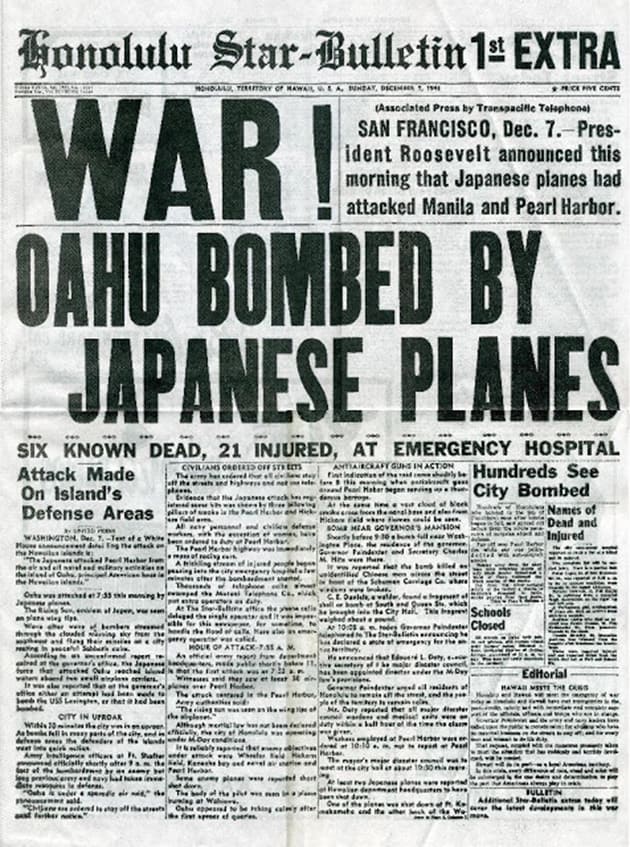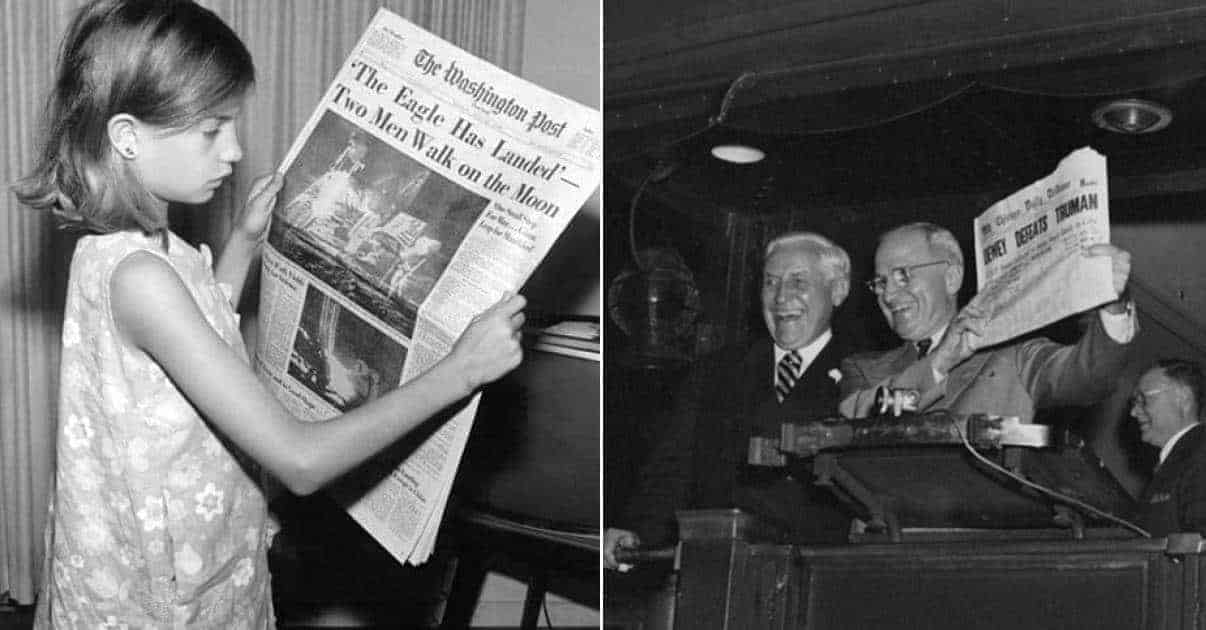For Americans who grew up reading them, the demise of newspapers is saddening. They were once the primary source of news, with some newspapers printing several editions daily. Major cities had competing morning and evening newspapers, delivered to homes and newsstands still smelling of news ink. They were the source of national news, local news, entertainment, and opinion. Some were nationally known, others were local institutions. Before television 24 hours a day they were eagerly awaited for sports scores, their coverage of national events, and their reporting on the activities of national figures.
The United States learned of the attack on Pearl Harbor by radio, and eagerly awaited the Monday morning newspapers to find the details. When American troops went overseas news correspondents went with them, all of them trained in writing for newspapers. It was from their work, despite censorship, that Americans learned of the conditions encountered by the troops. Today, in most cities, newspapers are all but gone, replaced by television and social media. The days of detailed stories appearing under bold headlines which all but thundered from the page are gone, replaced by shouting talking heads who want to be as much of the story as what they are reporting.

Here are ten storied headlines from newspapers in history.

TITANIC SINKING; NO LIVES LOST
The Vancouver Daily World, known simply as the World, as it published under that banner, was founded in 1888 by John McLagan, who served as its editor and publisher. It was a popular newspaper in Washington and Oregon, as well as British Columbia. A former contributor to the Toronto Globe, and a writer of fiction and plays, McLagan built the World into a major voice in Western Canada and the northwestern United States by the end of the century, though illness confined him to his bed by 1900, from whence he continued to edit each edition. When he died in 1901 control of the paper passed to his wife, and it continued to do well financially.
In 1905 the paper was taken over by a group led by Louis Denison Taylor, who preferred to be addressed as L.D. and cherished political ambitions. In 1910 he was elected mayor of Vancouver and his newspaper was threatening the Vancouver Daily Province in circulation figures. Construction was underway for the World Tower (today the Sun Tower) which when completed in 1912 was the tallest building in the British Empire. Taylor was elected Mayor of Vancouver in 1910, the first of eleven one-year terms he would serve, though not consecutively, supported politically by the views expressed in the World.
When the Royal Mail Steamer (RMS) Titanic struck an iceberg shortly before midnight (ship’s time) on the night of April 14, 1912, the evaluation of the damage by the ship’s carpenter quickly revealed the inevitability of the ship sinking. An evacuation of the passengers via lifeboats was immediately ordered by Captain Smith, but the operation was poorly managed. Many boats were lowered over the side less than half full. The evacuation plan was intended to use the ship’s boats to carry passengers to vessels standing by for the purpose, but the only vessel in sight, SS Californian did not close with Titanic, having been ordered by its Captain to remain stopped for the night.
When RMS Carpathia arrived at the scene after daylight it took aboard 705 survivors. Californian belatedly realized the extent of the disaster when it turned its radio on after sunrise, and joined in the search for survivors, as did other vessels. Carpathia radioed its owners that it had survivors aboard. This signal was interpreted by some to mean that all of Titanic’s passengers and crew had been brought aboard the other ships, in accordance with rescue plans. The World was not the only newspaper to report the rescue, but it displayed the news more prominently, even as the New York Times and other papers were reporting the true extent of the disaster.
Nor was the headline in the World the only error concerning the disaster to appear on its front page. A subhead in the article describing the sinking announced that Titanic was on its way to Halifax under tow. The following day the World’s front page described the enormity of the tragedy, but a retraction or explanation of its original reporting of the event was never offered. The World continued to publish for another dozen years following the Titanic tragedy, but financial problems encountered by its owner led to similar problems suffered by the newspaper and in 1924 to was sold to the Vancouver Sun.

